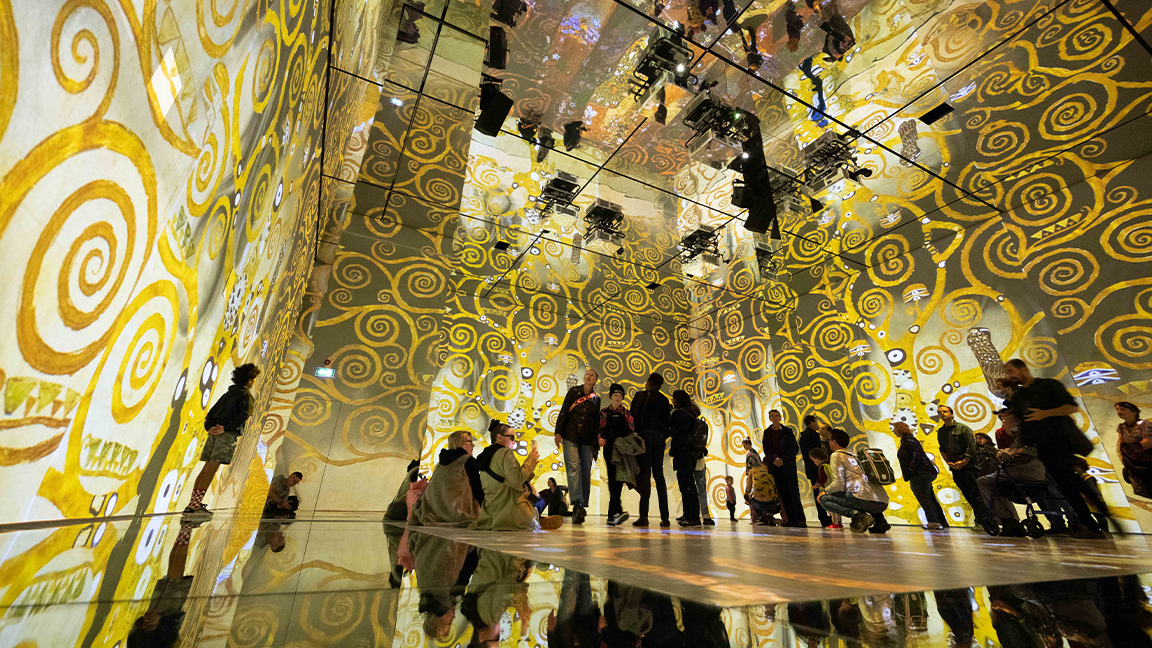
Immersive experiences are that rare thing, a combination of art, technology and creativity working in harmony to offer a unique moment. They can be entertaining, challenging and eye-opening. The technology used is akin to a big budget Hollywood production with the goal of getting us closer to the meaning of an artwork.
Recently I visited Frameless in London and was wowed by this state-of-the-art immersive experience. The exhibition contains four rooms displaying 42 famous artworks that have been painstakingly reworked as digital, animated events. Each room feels different and ekes out a new way of experiencing – of observing – some of the art world’s most cherished masterpieces.
At their best, an immersive experience, like Frameless, or indeed others such as the touring Van Gogh Immersive Experience, can make art approachable. The unique idea behind Frameless, however, is that it remains in one place and is designed around the space it uses. The exhibition can even be regularly updated with new art and refinements to existing experiences.
So what did it take to bring the mix of artworks to life? Each room is themed around a subject rather than any singular artist, ensuring Frameless can cover many masters and combine art in unique and emotive ways. It means the likes of Klimt and Klee as well as Delaunay and Dail, and Rembrandt and Monet, can come to life all under one roof in a joined-up way.
Immersive experiences bring art to everyone
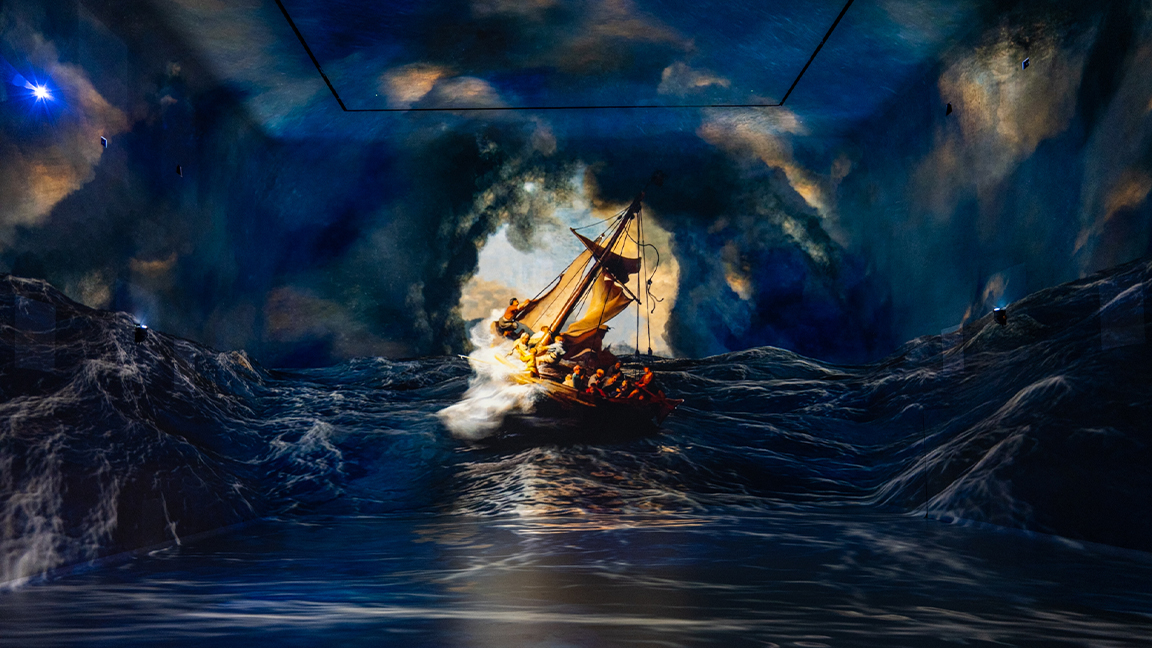
From the outset art history terms and wording were dropped, says co-curator Rosie O’Connor, who tells me the goal of Frameless was always to “introduce audiences to new artists”. She adds: “Art should be playful, it should be joyful, and not always academic.”
Behind the Frameless experience is some impressive new technology that makes use of 50 laser projectors and 158 loudspeakers to bring an audio-visual spectacle to life, and even includes gesture recognition so you can, in specific cases, affect and interact with the art.
O’Connor explains selecting the art to marry perfectly with the technology was a unique challenge of an immersive experience like Frameless. “We knew what kind of technology would work with the different types of artworks and what experience we wanted to make people feel in each room,” she says. “So in that way, the technology and the art choices very much informed each other to create the best experience.”
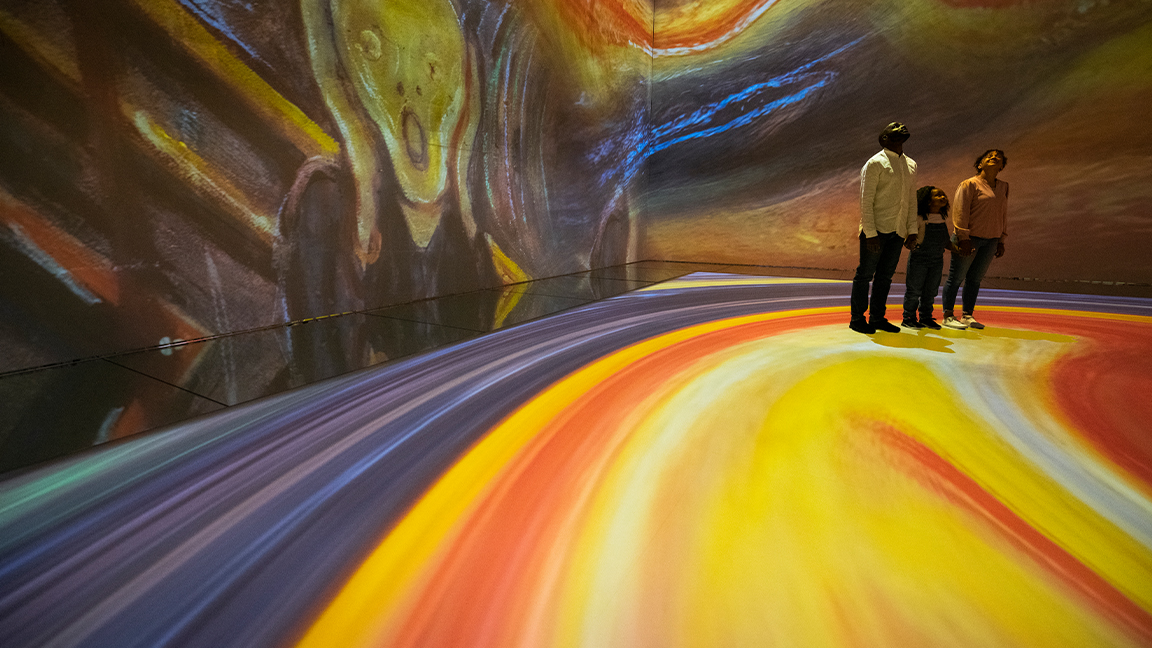
Frameless positions you inside the art and projects it around you, combining with music and audio effects along with animated segments, it’s a truly immersive way of experiencing art. An exhibit like this can offer the space to reevaluate traditional art and how technology can enhance and not harm our love of masterpieces.
“Being able to really celebrate the artworks in a brand new way, and to bring out details that you wouldn't usually see with your eyes when looking at an actual canvas, and celebrating these little details, that's been a joy,” enthuses O’Connor. “Now knowing what is possible with the technology, that's just given me so many more ideas of what artworks we could make immersive.”
Frameless offers art lovers an intimate view of some of the world’s most famous paintings in a way we’ve never seen before and on a scale rarely imagined, and it’s quite something. Ryan Atwood led the digital work and team of animators on Frameless and explains how after he learned of the hidden life and detail found in Rachel Ruysch’s Tree Trunk Surrounded by Flowers, and Butterflies and Other Animals he became “intrigued by the idea of showing this art intimately […] I had to just blow that our way up […] people need to see what this beautiful artist has done, down to the brushstrokes”.
He adds: “Yes, it's hidden, and that's the beauty of it, but let's bring awareness to people because I think people just walk past it sometimes. It deserves to have its day where people can understand the complexity of art. It's phenomenal. And we need to celebrate it.”
The emotional impact of immersive experiences
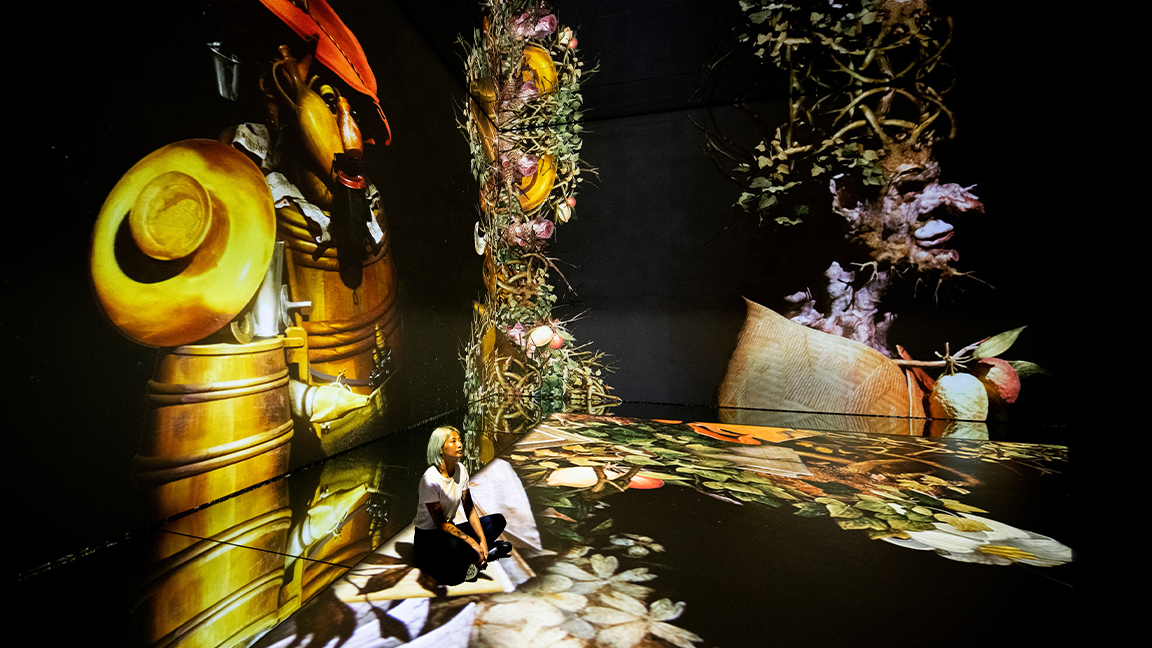
For O'Connor, using this mix of traditional and digital art, animation and new technology was always about trying to provoke an emotional response from the audience. Each themed room at Frameless lands in a different way, whether it’s encouraging guests to chase splashes of paint around a room or relax in the dark intimacy of Paul Klee's Castle And Sun, the famous coloured blocks pulse rhythmically to the music.
“It was a very careful dance between the art choices, the animation and the music,” says O'Connor, who points out how despite Frameless taking part in huge, cavernous rooms it’s in fact a “much more personal experience” than you’d get from a traditional gallery because you’re “you're enveloped in the artwork” and you’re almost one-to-one with the art. “I feel like it becomes a much more personal and emotional experience with the music and even just with this scale,” she says.
An immersive experience is a collision between art, technology, animation, filmmaking, theatre and music. Atwood was in charge of bringing all of this mayhem together into one experience, inspired by his love of an old Robin Williams movie What Dreams May Come and influenced by technology used on shows like The Mandalorian.
It's a great time to be an animator because I think this world is expanding dramatically right now
Ryan Atwood
Frameless is doing some world firsts, for example it has a room with 360 degree projection, which means animators working on digitally recreating the art to create a six sided spherical map with projection. The Emmy award-winning studio Five Currents worked with animation team Luke Hall Studio – "he kind of had that crazy glint in his eye," says Atwood when he pitched Frameless. It took between 10 and 20 animators working thousands of hours, painstakingly sampling brush strokes of the masters and piecing together "slivers" of art to "bring a masterpiece to life". In hindsight, Atwood laughs and says "it was quite a ballsy thing to do".
The animators used all of the tools you'd expect from a major movie production or animated film, including Unreal Engine, Cinema 4D and 3ds Max. Atwood explains how Unreal Engine became a very important tool, telling me: "We found Unreal to be very useful in the end, because what we did is we made a fake video game platform, if you will, where you can take a gaming joystick and navigate through the space and see how it looked, because they were still building it when we recreated the animation."
The rise and scale of immersive experiences like Frameless is a healthy reminder that animators are in high demand and anyone who can use Unreal Engine 5 will never be out of work, says Atwood, who explains. "It's a great time to be an animator because I think this world is expanding dramatically right now. It's only going to get better, and as our audience gets educated, they know what's good, and what's bad, it's starting to happen."
The art of sound design
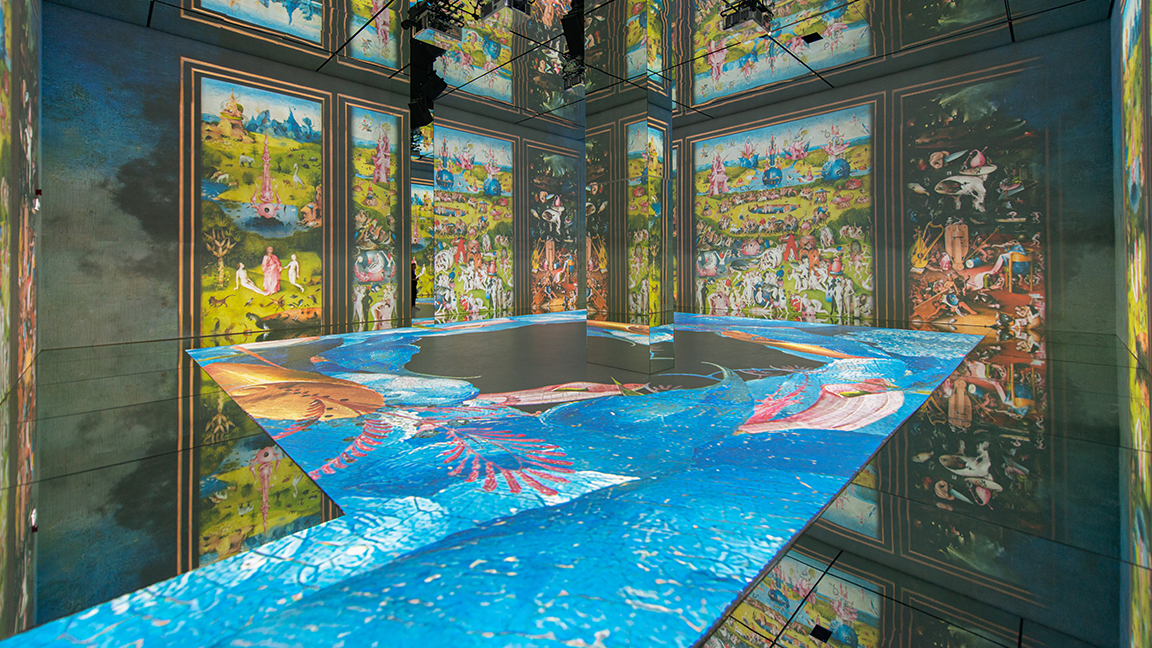
Frameless’ chief technology officer Simon Kentish picks up on the audio, which has been designed to work beautifully with the animation and digital art. He tells me how Panasonic came on board and are using Frameless as a showcase for the latest audio and visual technology.
"[The audio] really is a big part of it," says Kentish, explaining how the 158 speakers "bring the whole thing to life […] the audio really fills the space and it's a huge part of it. We work very carefully to create audio and compose music that works the art, and we're equally proud that we've made the sound as good as the picture."
When the immersive experience was being developed Atwood tells me how he would stand in areas of a room and imagine how the art would be animated and where the audio will come into play, and how different sounds and musical notes are heard in different areas of a room as the image builds and moves.
He tells me how he spent thousands of hours planning how the audio and animation would combine. He stood in the space and pictured Hieronymus Bosch's The Garden of Earthly Delights projected and moving around the room. "If you're standing over there, I want you to hear a different animal and I want them to pull you around the room," he remembers. "When you talk about the tech, we're really utilising those speakers and literally pulling you around the room."
Technology enhances traditional art
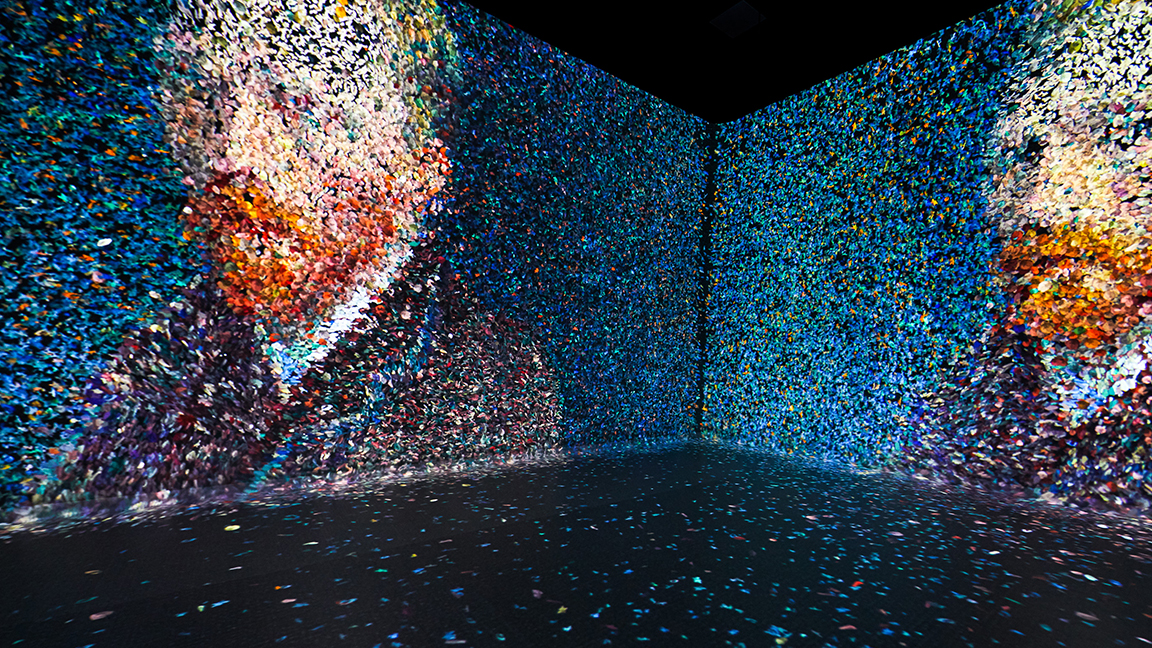
Another striking aspect of Frameless is how the team has connected artists that are centuries apart, and we'd never sit side-by-side in a standard gallery. This approach, as well as choosing artwork that can be digitally cut-up and spliced back together and animated, lends Frameless a distinctive feeling.
”One of the things that is very important to me, and always will be, and it's very important to the whole Frameless team, is a complete commitment to at all times honouring the artwork,” says O'Connor, who tells me how limitations were placed on the animators. “I'm not interested in putting a composition apart and recreating our own.”
The goal of an immersive experience like Frameless is to “honour the artists and their vision” and enhance the artwork through technology, “not recreate something from their masterpiece,” explains O'Connor.
This is noticeable when I payed a visit to Frameless, and a keen eye would see how at one point on each experience, in every painting used, the original composition would be used in its entirety. Although the team of digital artists and animators are recreating the art and moving it around the rooms and the spectators, the composition will always sit how it was meant to look.
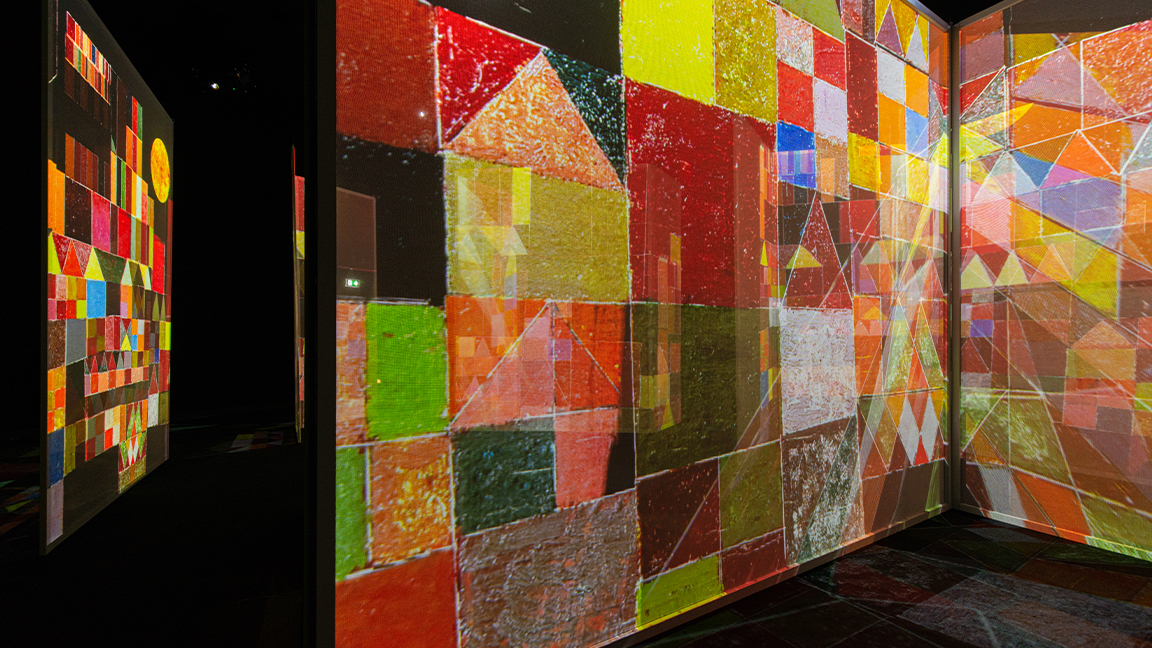
It would be easy to think immersive experiences will take the place of traditional galleries as, aside from the ability of an exhibit like Frameless to envelope viewers in the art, technology-driven exhibitions like this can have some practical applications. Traditional galleries will ship their collections all over the world at incredible cost, and at risk of damage, loss or theft. A digital experience can showcase this same art in a new and emotional way without risk or environmental impact.
There are already plans to launch versions of Frameless around the world and connect them digitally. Atwood tells me each location would celebrate the art of the local culture but being digital these immersive exhibitions can have a global presence. Art could be rotated amongst the Frameless spaces and even offer global timed launches.
Kentish chips in and jokes, “I may be showing my age but I’m having flashbacks to Live Aid and Phil Collins”. The musician famously played in two continents on the same day thanks to Concorde and a very bad carbon footprint – no such problems for a digital immersive experience like Frameless.
Are immersive experiences the future?
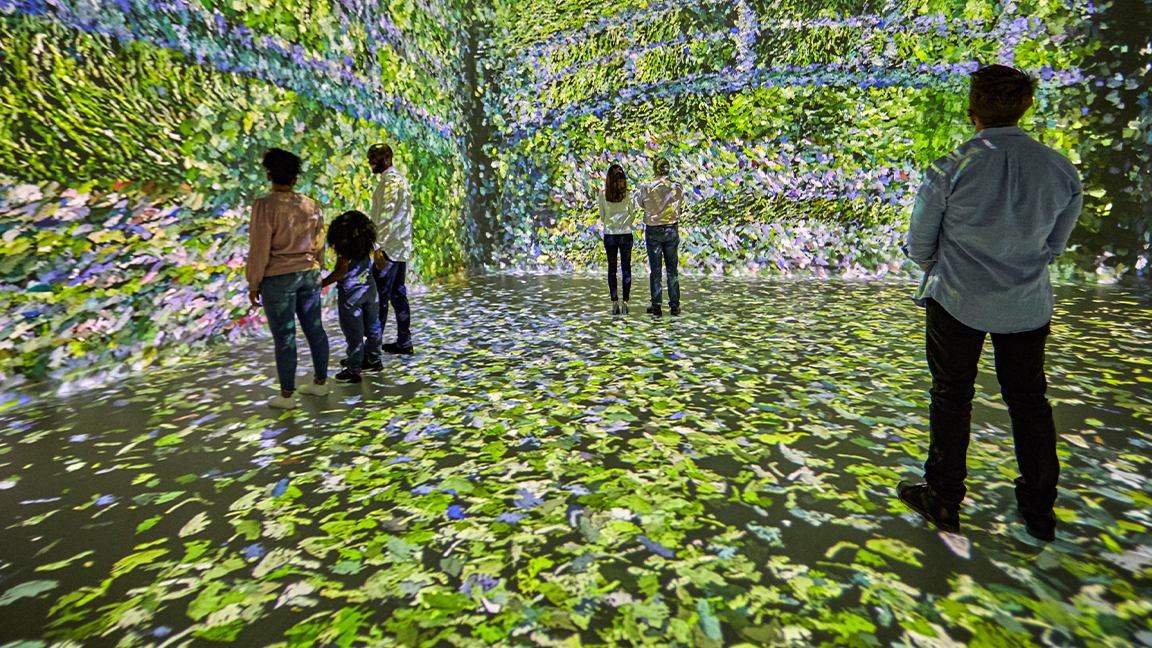
O'Connor views the future of how art is displayed with more nuance than one or the other. She tells me: “I think it's part of the future. What I don't think is that an immersive art experience should replace a traditional gallery experience, they are very separate things, and I want them to complement each other rather than to be competing.”
The traditional gallery experience won’t disappear but a project like Frameless shows how new technology can be used to enhance or reinterpret how art can be viewed. As Frameless demonstrates, the technology is at a point where it's truly making an impact on people who experience its use.
“We blow it up,” laughs Atwood as he considers where an immersive experience fits into the art world: “I think you see the art differently and you've experienced it a little bit differently, and hopefully it gives you the desire to find the gallery, see the real thing and admire it now in a new way.”
It's a brilliant, accessible way for people to start their journey in art history.
Rosie O'Connor
“A lot of artists are working in this medium as well,” identifies O'Connor. “So in that sense, you'll have more of these experiences popping up from contemporary artists that are literally creating for the space itself. I think it's part of the future. It's not ever going to be the entirety of the way audiences experience art, but it's a brilliant, accessible way for people to start their journey in art history.”
Atwood gets excited at the prospect of current and new digital artists embracing immersive experiences to display art and create interactive events. ”I don't know why you wouldn't, and if not Frameless then somebody will,” he says, and considers whose art would embrace an immersive digital space, “especially Damien Hirst,” he concludes.
“Why wouldn't you want beautiful art to come to life? I think [Damien Hirst] could change that perspective. As a matter of fact, thinking about his art, I'm just thinking about some of his pieces now, and what you could do with it, and it'd be phenomenal. It would transport you into a portal of the new world. His art really lends itself to that space. Yeah, Frameless would be an amazing complement to what he does. And it would be an amazing collaboration.”







